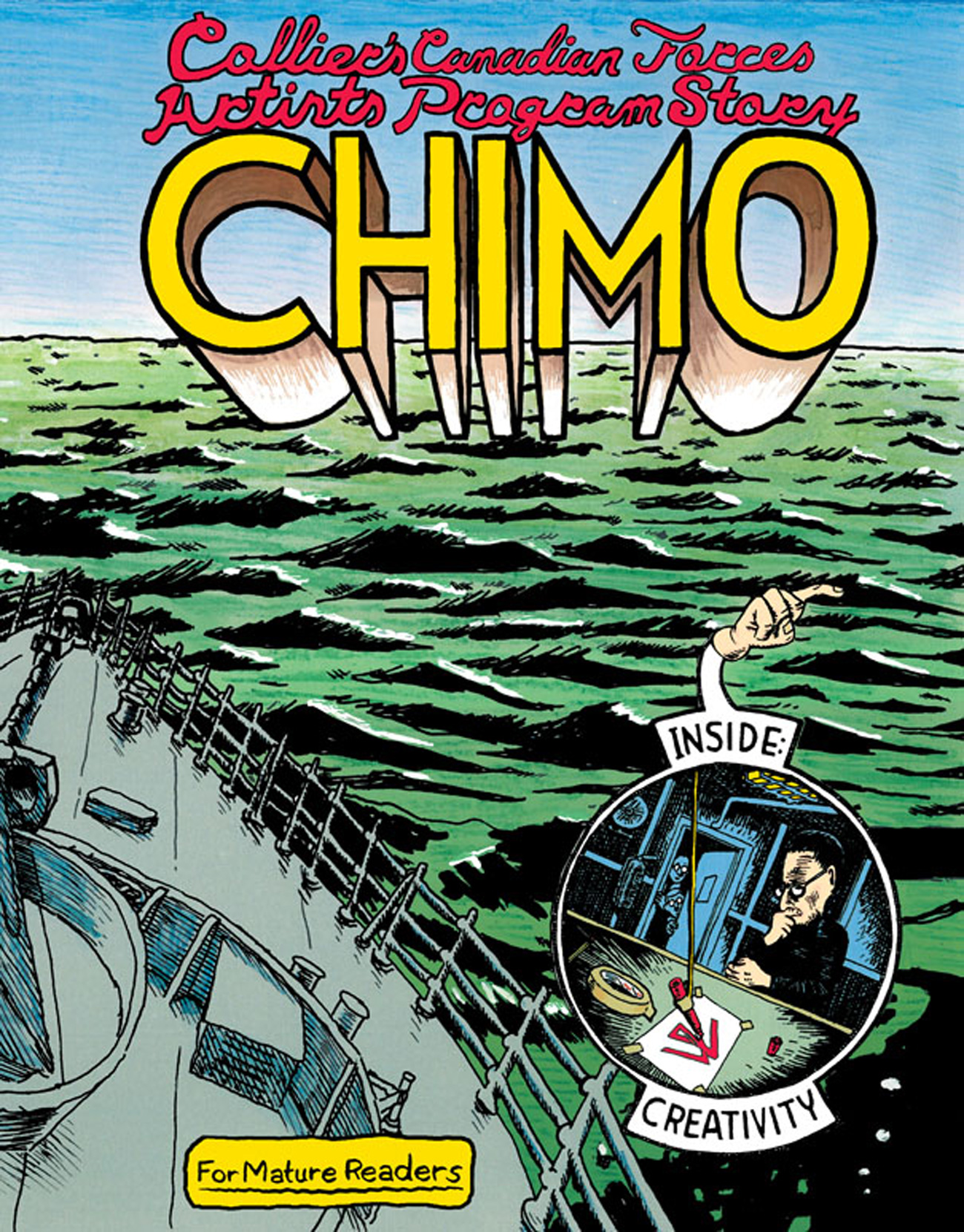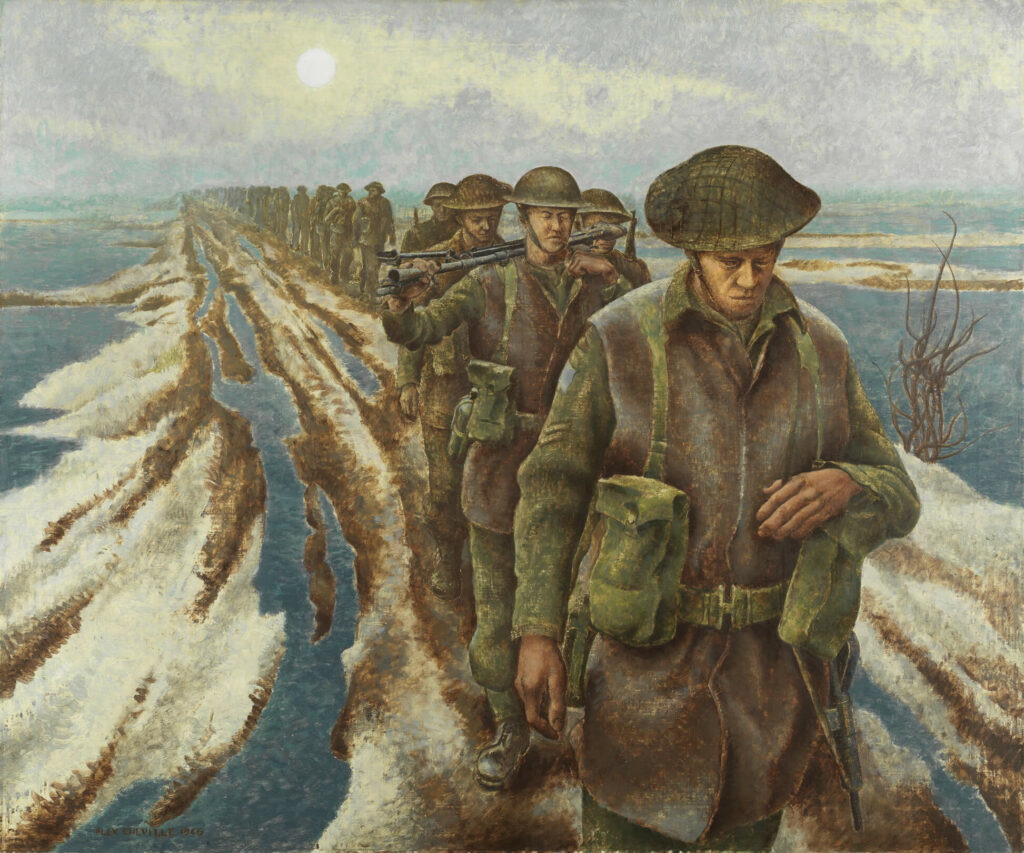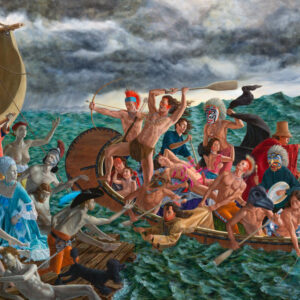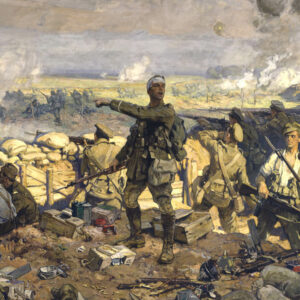CHIMO: Collier’s Canadian Forces Artists Program Story 2011

David Collier, CHIMO: Collier’s Canadian Forces Artists Program Story, 2011
Greenwich, N.S.: Conundrum Press
CHIMO is a graphic autobiography that tells the story of reservist David Collier (b.1963) and his decision to re-enlist in the Canadian Army at the age of forty and go through basic training again, leaving his new family behind. His goal was to get to Afghanistan and become a war artist. It begins with his experiences in training and moves on to his delight at becoming an official war artist with the Canadian Forces Artists Program in 2005, although he does not go to Afghanistan. He returns to training and, after setbacks due to injuries, finally graduates.

Interspersing his own family life and his experiences in basic training, frame by frame he writes about his respect for war artists and war art. He extols the success of the Canadian War Memorials Fund program during the First World War, showing Eric Brown, director of the National Gallery of Canada, and Sir Edmund Walker, chairman of the gallery’s board, at the 1919 Canadian War Memorials exhibition in London. “Well done,” says Brown to Walker.
Another frame introduces the book Canvas of War: Painting the Canadian Experience, 1914–1945 (2000) as a “good read.” In a number of frames he writes about how much he likes the war art of Bruno Bobak (1923–2012), Molly Lamb Bobak (1920–2014), and Alex Colville (1920–2013), and includes crosshatched drawings of some of their works, such as Colville’s Bodies in a Grave and Infantry, Near Nijmegen, Holland, both 1946. Along with Andrew Wright (b.1971) and François Béroud (b.1961), he is invited to join HMCS Toronto in St. John’s, Newfoundland, as an artist—and he duplicates the letter of invitation in a frame. He notes that the three artists are all challenged by the experience. As he writes in another frame, like his hero Colville, all he wants is to be a soldier and an artist.
The greatest influence on Collier’s graphic style has been the American cartoonist Robert Crumb (b.1943), whose work is characterized by crosshatching. Collier’s black and white drawings have a strong tactile quality, as he varies the strokes of his pen to gain effect. Surprisingly, despite his interest in Molly Lamb Bobak’s paintings, CHIMO suggests that Collier was not familiar with her illustrated diary, W110278: The Personal War Records of Private Lamb, M., 1942–45, though it was published in full in 1992. Bobak’s approach is clearly different: it is illustrated text as opposed to his comic-strip format.
When Collier first joined the army as a young man, he drew comic strips that were published in the army’s newspaper, The Maple Leaf. Until he re-enlisted, he contributed illustrations to newspapers such as the Globe and Mail and to comic anthologies. He has also published a graphic biography of David Milgaard, who was falsely accused of murder: Surviving Saskatoon, 2003. For the 2014–15 Alex Colville retrospective held at the Art Gallery of Ontario and National Gallery of Canada, Collier produced a commissioned work inspired by Colville that was displayed as an installation and also published in print under the title Colville Comics (2014).

 About the Author
About the Author
 More Online Art Books
More Online Art Books
 Acknowledgements
Acknowledgements